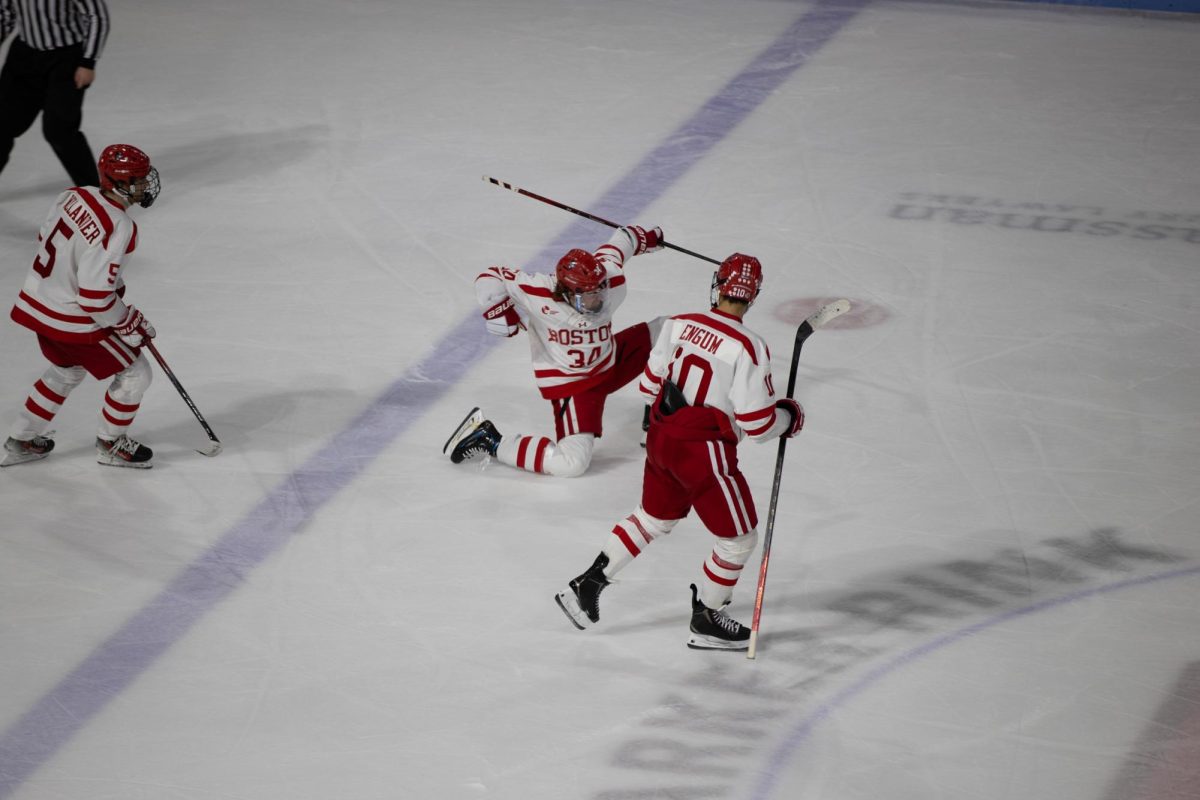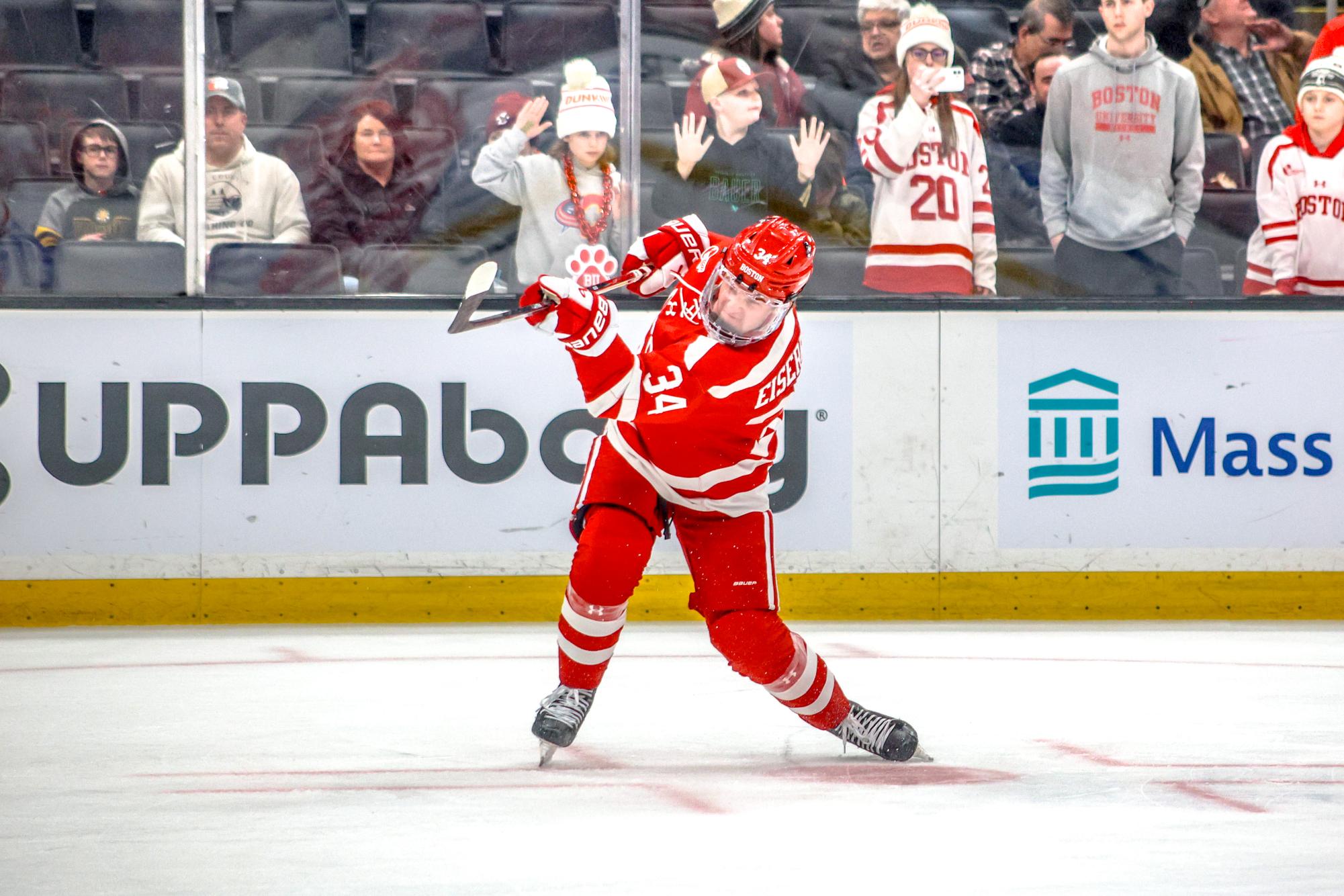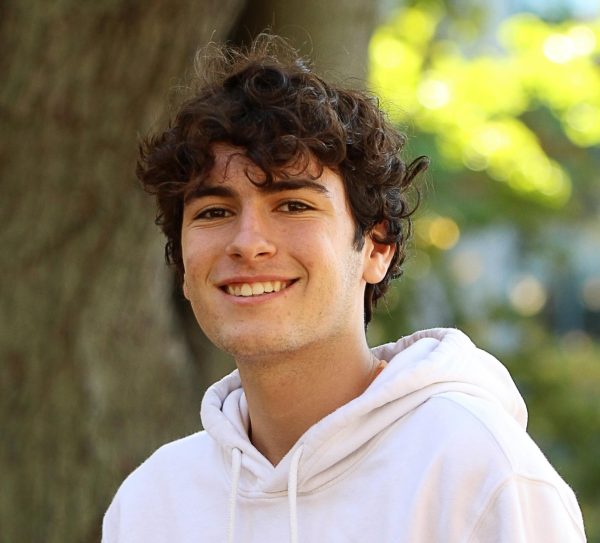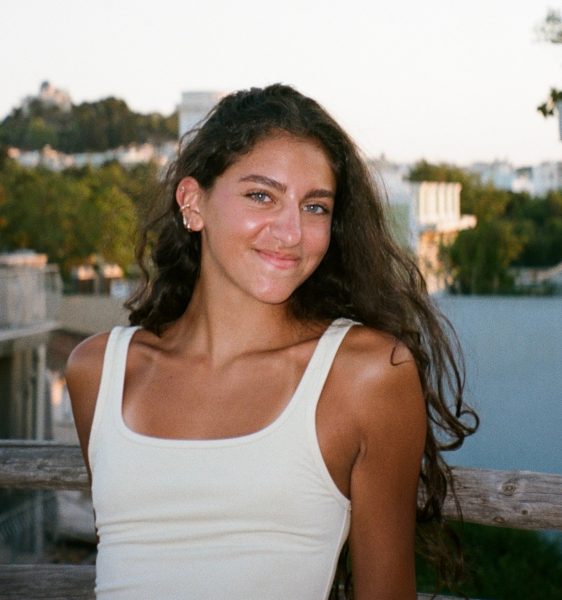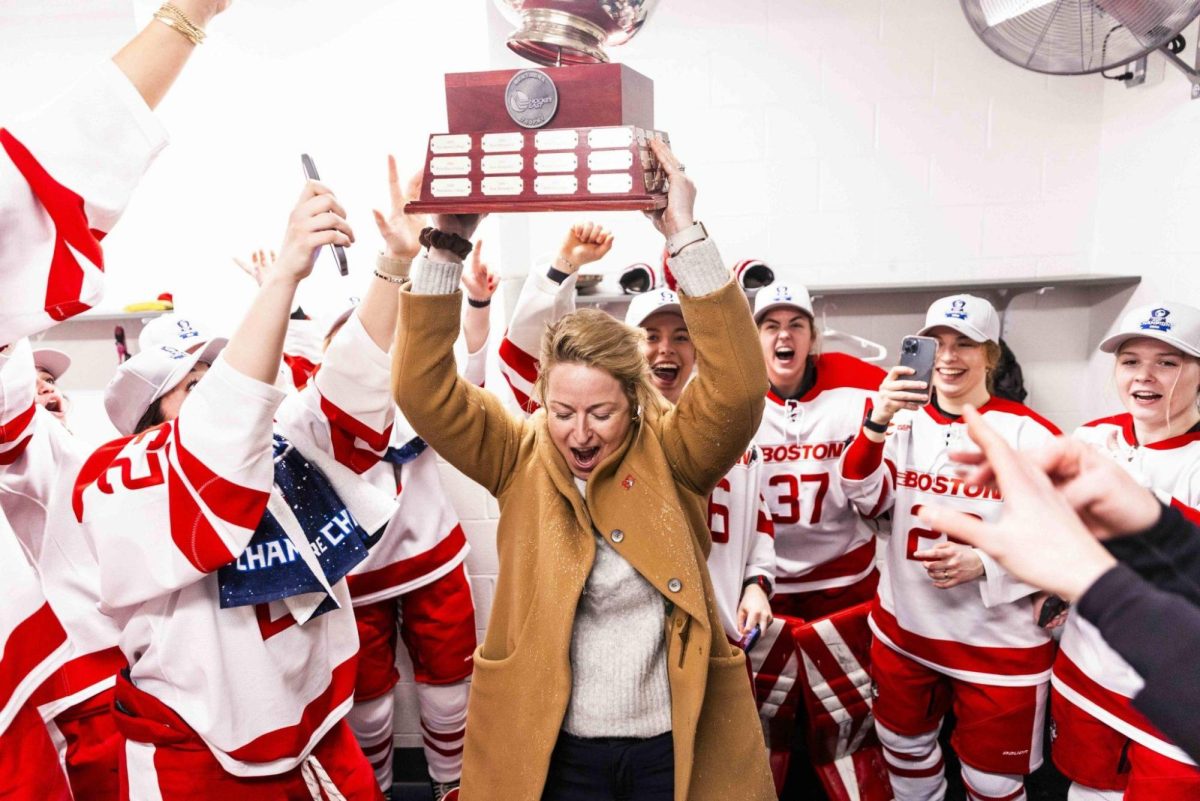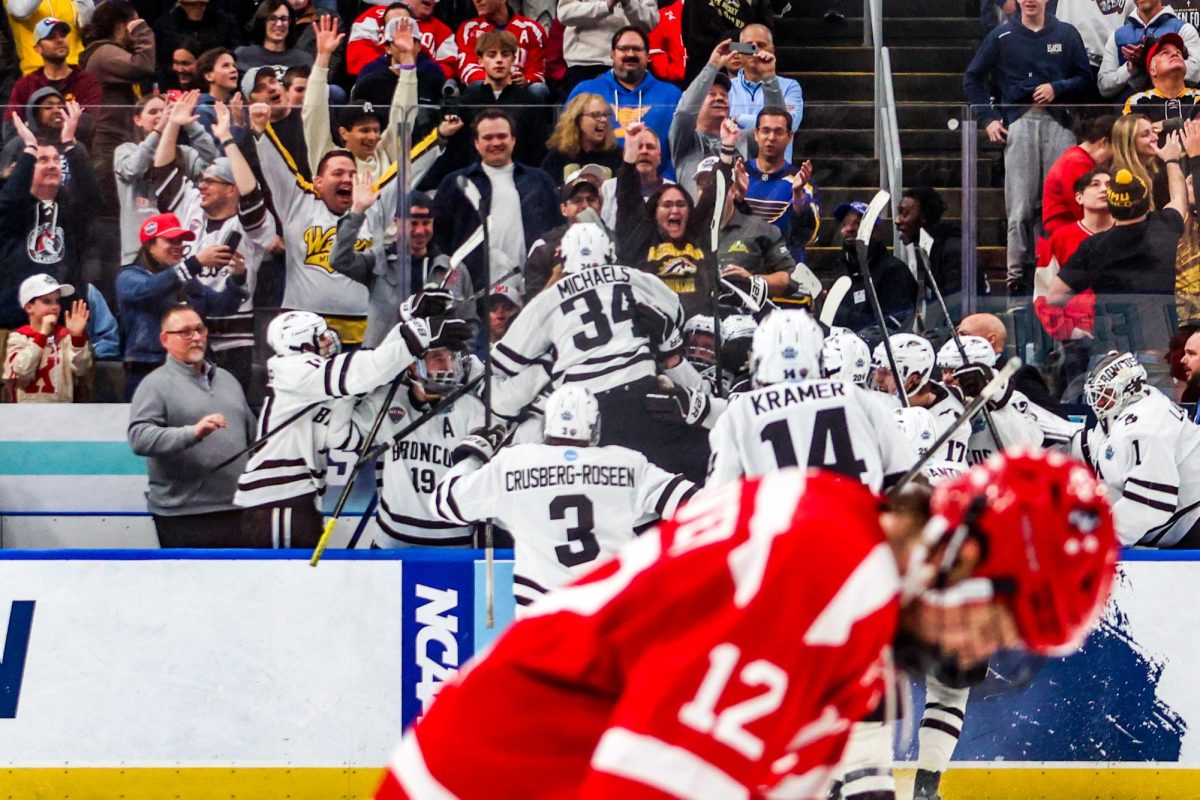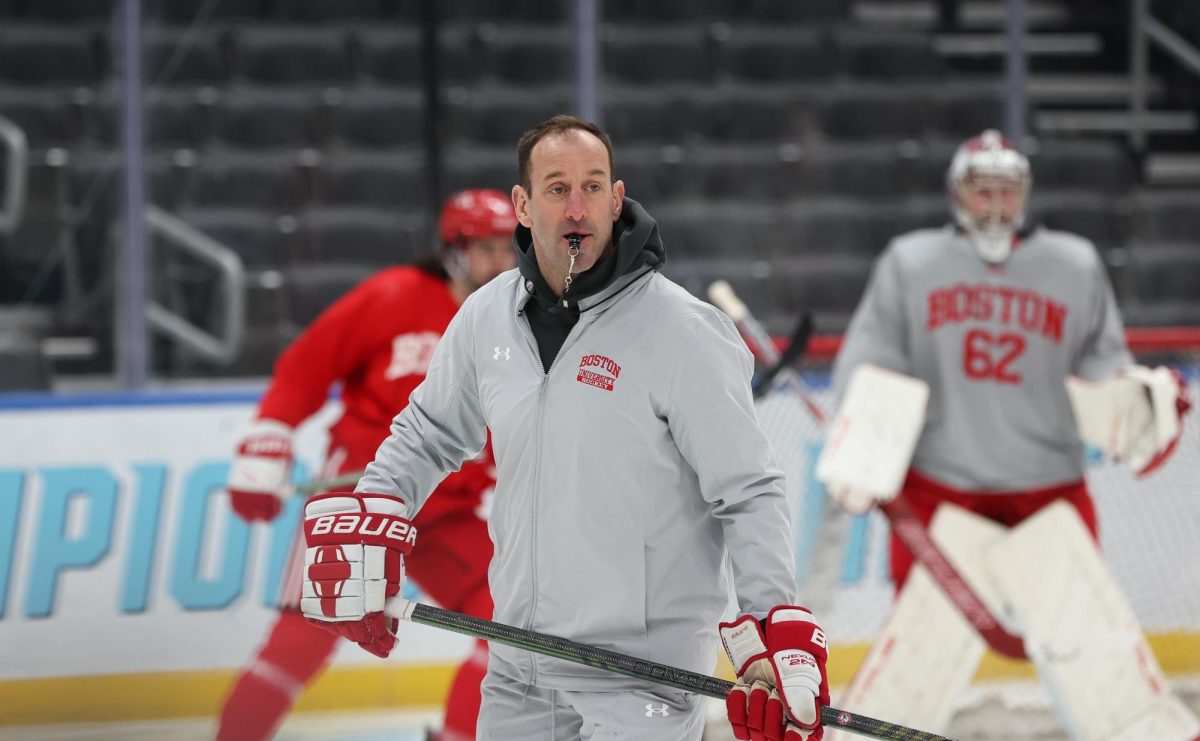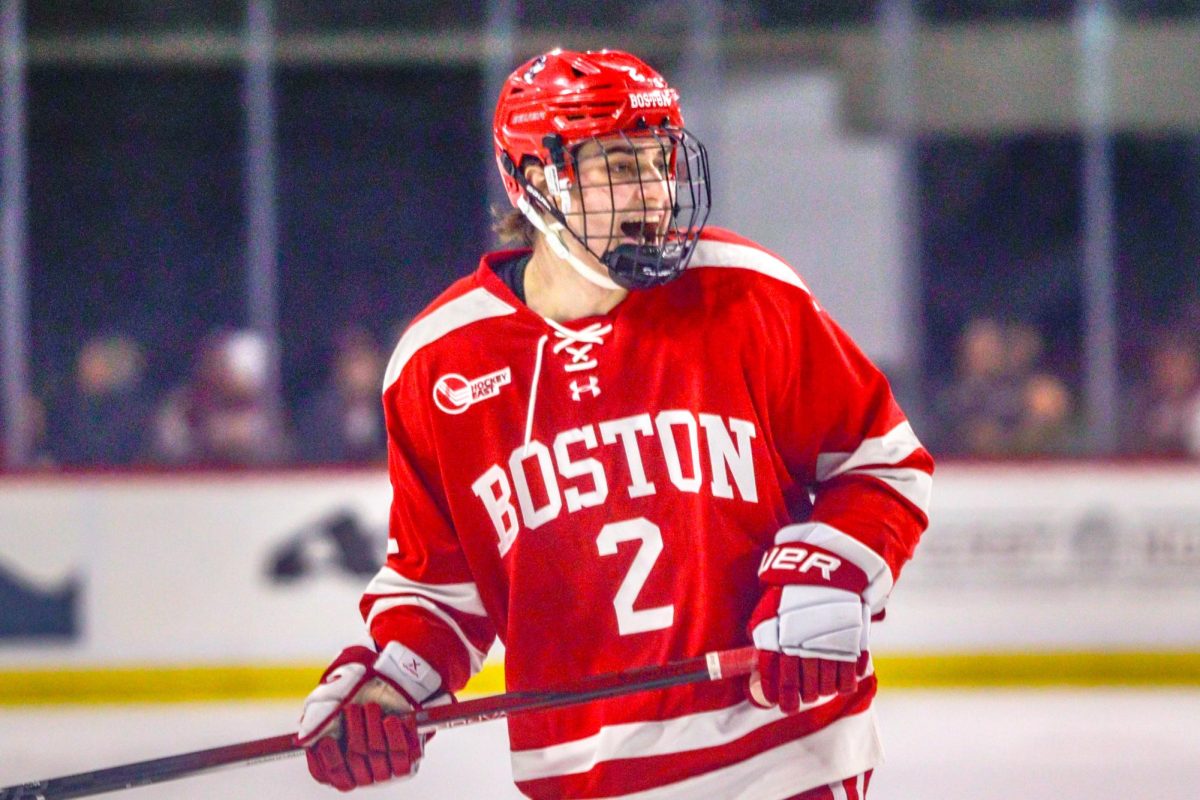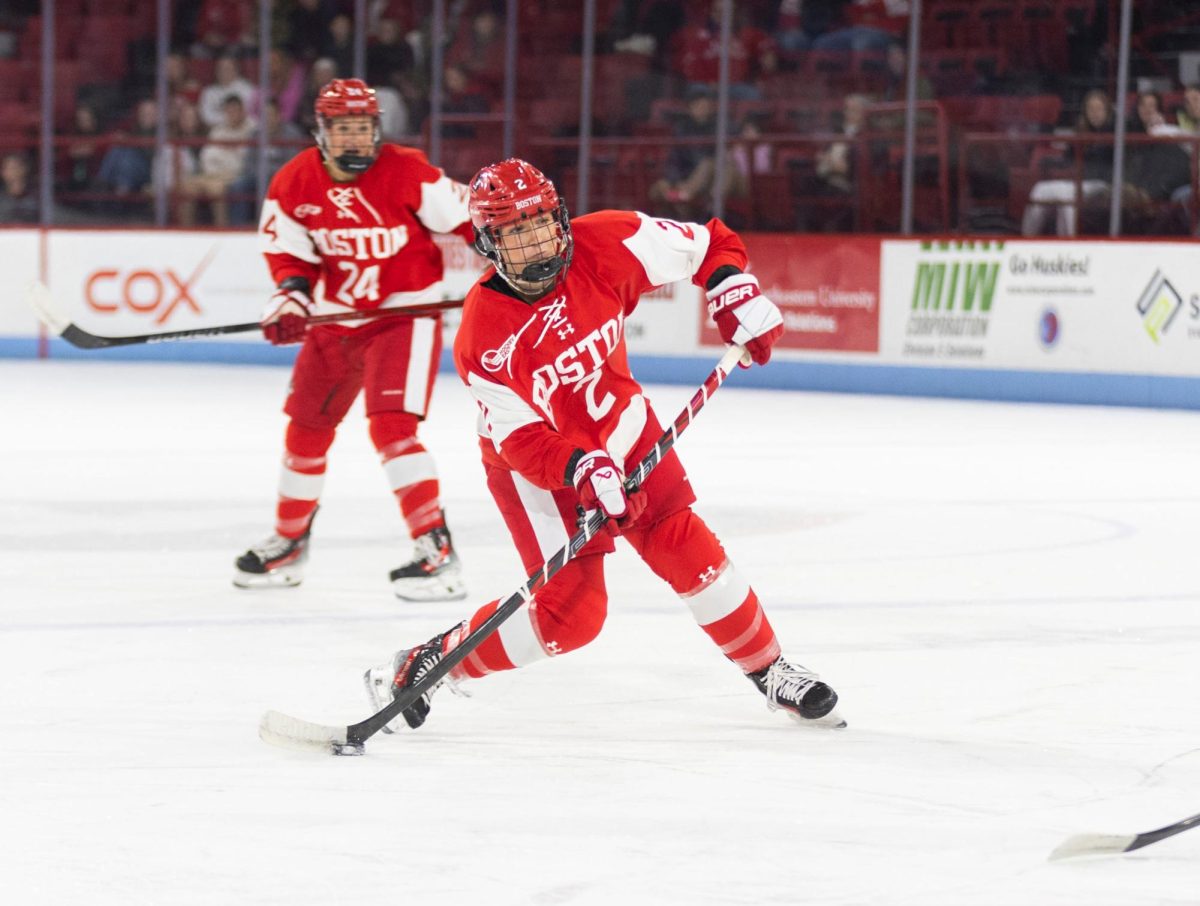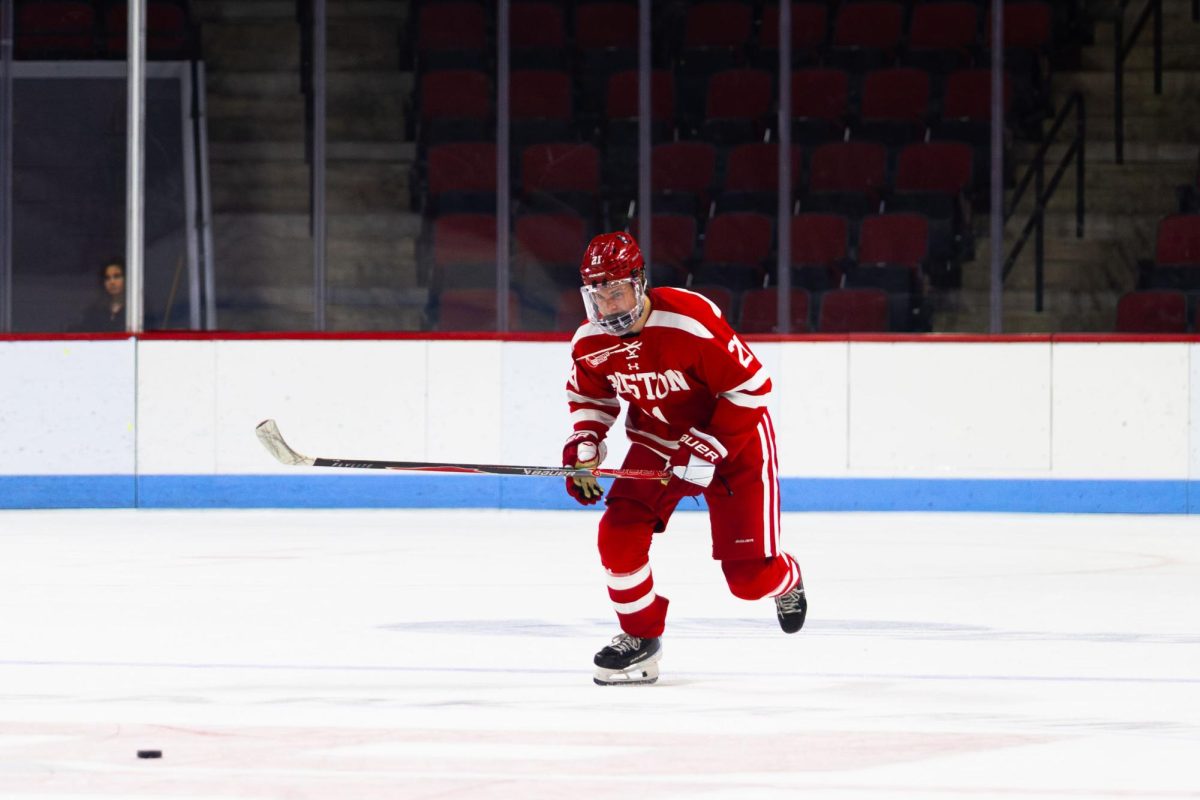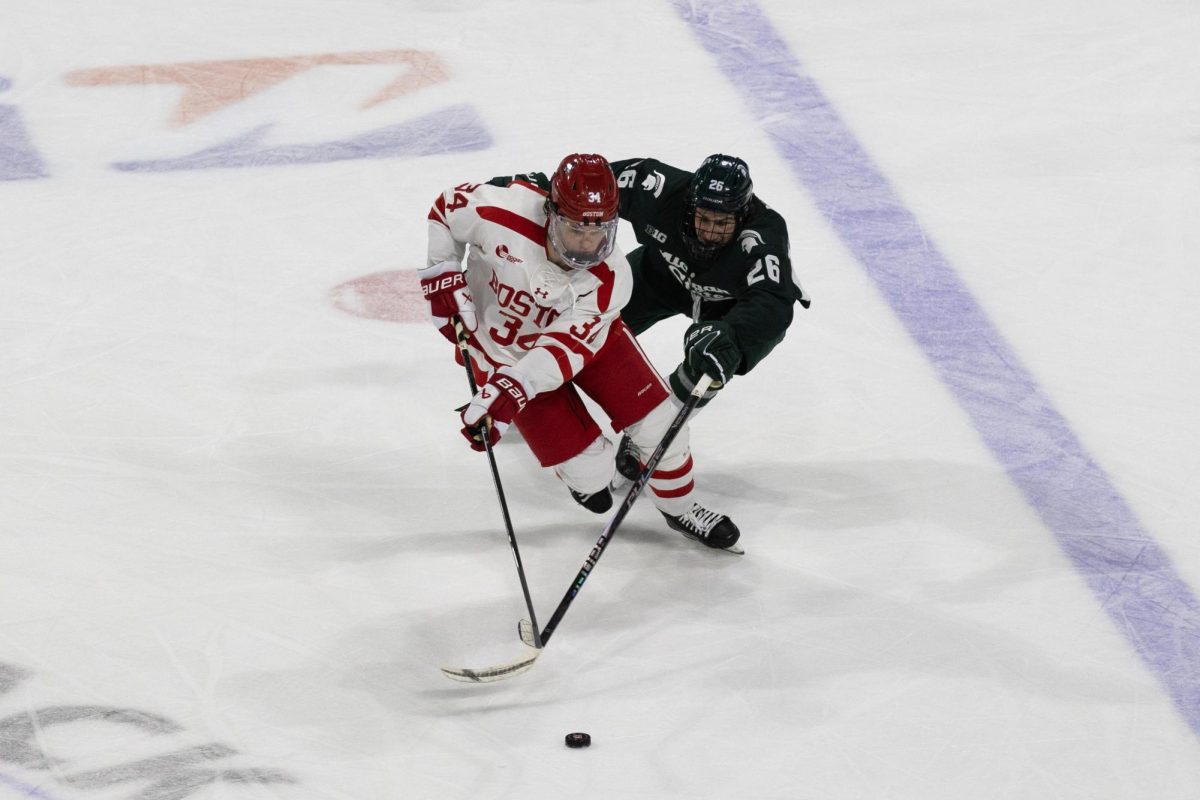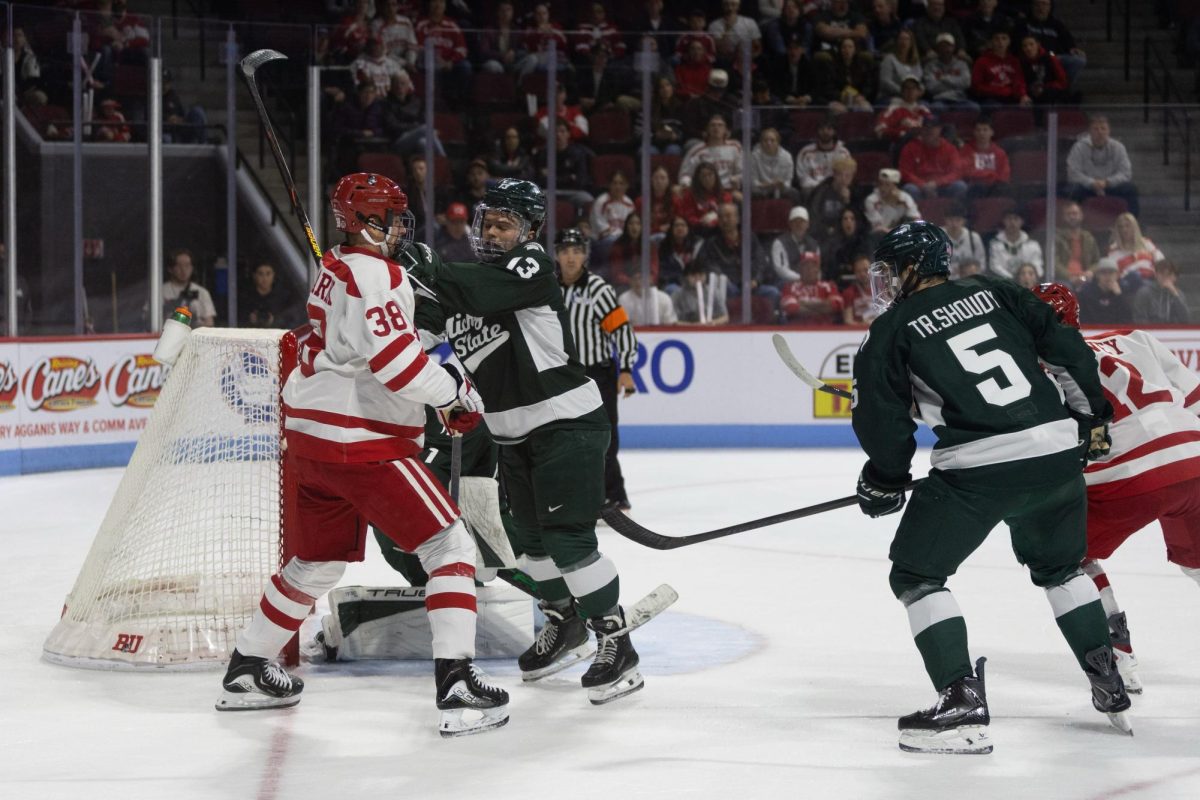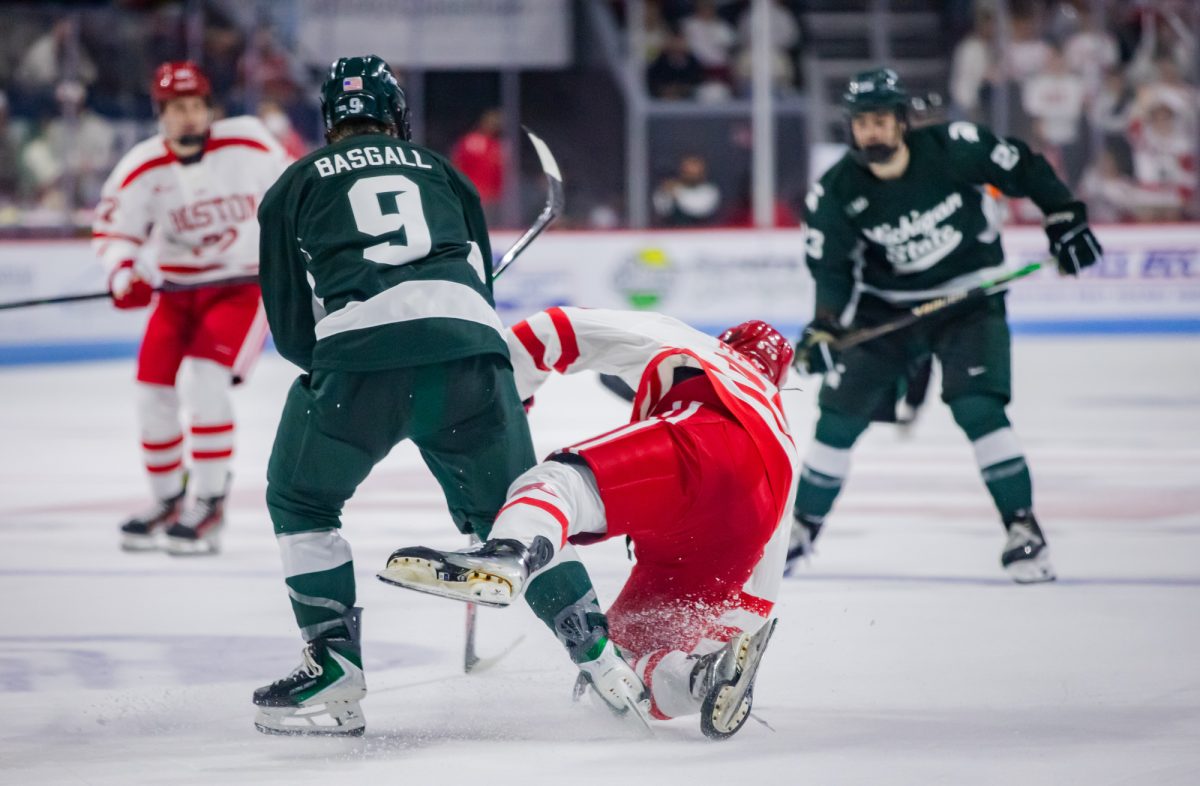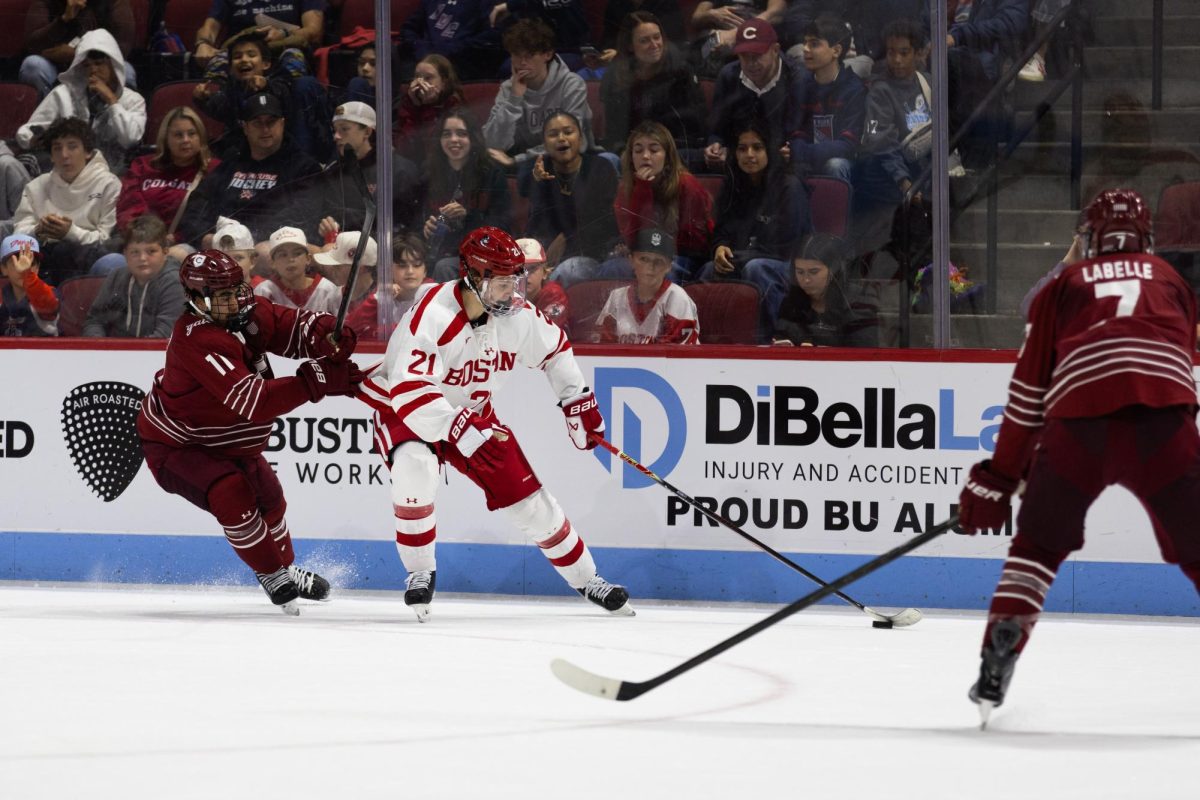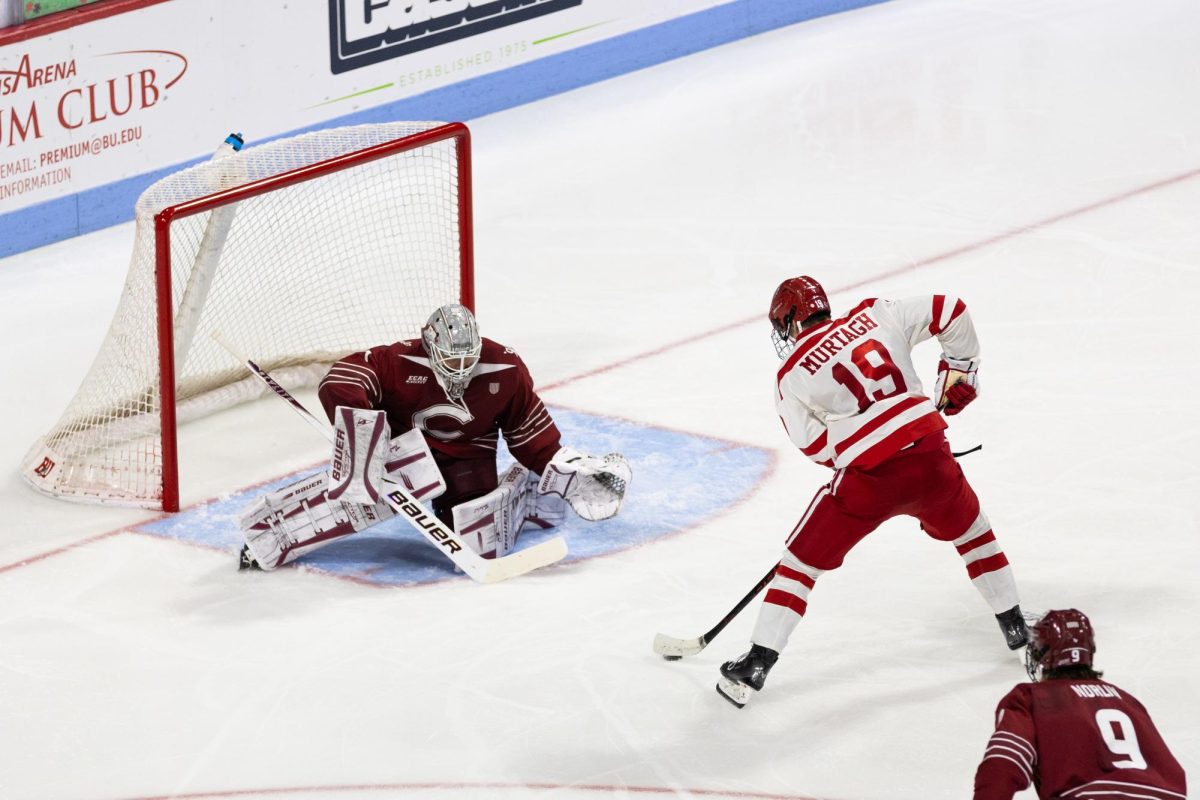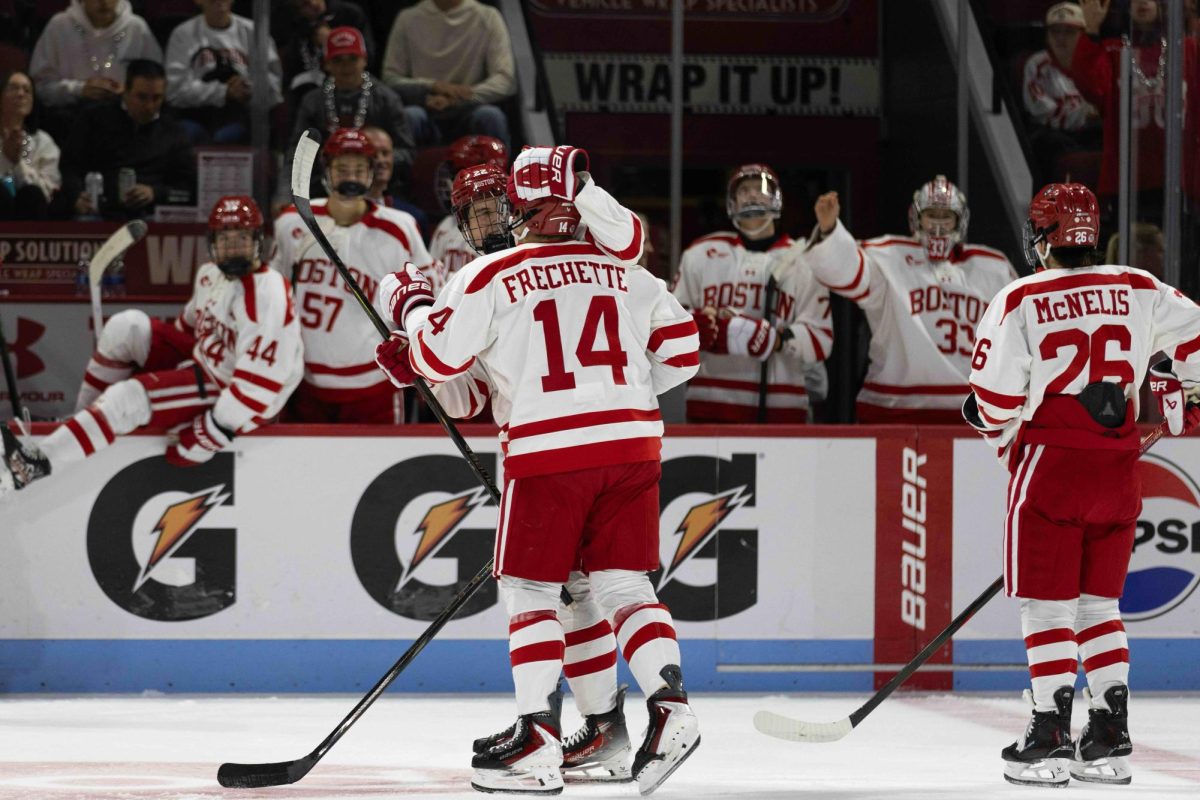AROUND AN HOUR before every game, Cole Eiserman finds a spot on the bench, puts his over-ear headphones on and stares out at the empty rink in front of him. He may have the most powerful shot in the country, but mindfulness is a big deal for college hockey’s most feared goal scorer. As he sits on the bench, Eiserman imagines the rink as a kind of bubble. In between three sips of water, three of Pedialyte, and three of coffee — in that order — he traces his mind around the boards.
“The game is in the glass,” Eiserman tells me. “So I’m just trying to stay in that bubble. Nothing else matters. Nothing, no fans, nothing. The only thing that matters is that game.”
This is how Eiserman, 19, centers his focus before playing one of the most chaotic sports on earth. Ultimately, the goal for the sophomore forward, who the New York Islanders took with the 20th pick in the 2024 NHL Draft, is to grab as much control over a game that, by its nature, is so very uncontrollable. It’s what drew a young Eiserman to goal-scoring in the first place. In his 8-year-old mind, the best way to dictate the outcome of a hockey game was to score the goals. He has since become better at that than arguably any other drafted prospect, after leading all NCAA freshmen in goals last season at Boston University. He is not the one-tool player he’s sometimes made out to be, but everyone — himself included — knows Eiserman’s value to BU, to the Islanders, and to any team he plays on is putting pucks in the back of the net. And because he is not the most creative player, he only gets so many chances to do it. This means that, in a sport defined by unpredictability, Eiserman’s game is about certainty.
“You only get so many opportunities. You’re only getting, if you’re having a good game, maybe three-to-five Grade A chances,” Eiserman says. “So once you do get that Grade A, in the back of my head, it has to go in.”
So much of the public’s attention is given to Eiserman’s physical gifts and the sheer, Ovechkin-like power he generates on his shot. He’s famous for his one-timer, which comes off his stick so fast that it’s been dubbed a “no-timer.” But as the Newburyport, Mass., native sits in BU’s quiet film room, he points out that less than a fourth of his goals last season were of this sort. (He’s almost right. Only seven of his 25 tallies were one-timers.) “He can shoot the puck in so many different ways,” says Notre Dame goalie Nick Kempf, a teammate of Eiserman’s for two seasons at the U.S. National Team Development Program. “It’s harder like that. It’s harder to expect what’s coming from him.” His gift is reading and reacting: to get and then score a Grade A, he must absorb a bevy of information — the location of defenders and teammates, the stance of a goalie, the angle of a goalie’s stick, to name a few — in a split second, while he and everyone around him move at high speeds.
He can’t exactly afford to be distracted.
Hence why Eiserman’s gameday routine, which he religiously adheres to, includes trapping his mind inside the rink. It also involves working out his eyes. “People forget you can stretch your eyes,” he says. “Your eyes are doing so much during the day. They need to be stretched too.” Part of his mindfulness on the bench before games includes chucking the stack of warm-up pucks, one by one, onto the ice. He then counts the scatter up, training his eyes to be aware of every object on the ice.
“I like to see the pucks and just be locked in. Because you know when you’re really seeing it, you’re really focused?” Eiserman says, his hands now making a halo shape around his shut eyes. “Sometimes it’s just foggy, and I’m trying to get that fogginess out of there.”

EISERMAN’S FAVORITE GOAL last season was the third-period tally that clinched the Beanpot against Boston College. Before I even pull up video of the goal on the laptop in front of us, he is recounting specific details from memory — that he had to bat the puck down to initially retrieve it, that it was rolling on the ice when he shot it, that he had a defender on his left hip. This is not an isolated example. He remembers all of his goals intimately; on multiple occasions, when I mistakenly thought he’d shot to a certain part of the goal (the puck moves so fast on screen it can be nearly impossible to tell), he quickly corrected me.
This clip starts with the puck in possession of BC, on the Eagles’ blue line. BU is attacking right to left on the screen. Teammate Quinn Hutson is forechecking near the BC bench, and he’s forced BC defender Lukas Gustafsson back towards the center of the ice. Eiserman approximates that Gustafsson’s best option is to pass across to teammate Aram Minnetian, so he extends his stick into the middle of the passing lane. He also knows that Gustafsson is a lefty, so he’ll have to make this pass on his backhand, and he sees that the puck is rolling on its side, not sliding on its back.
This leads Eiserman to a conclusion: Gustafsson’s pass will be airborne, not flat on the ice. When he lunges to intercept it, he lifts his stick and bats it down.
All of this happens in three seconds.
Now Eiserman has a Grade A chance. Minnetian is still in the play and closing in from the left, forcing Eiserman — a lefty — to shoot off his backhand. Jacob Fowler, who will eventually win the Mike Richter Award as college hockey’s best goalie, is in net, and Eiserman wants to go five hole (to shoot it between his legs). But Eiserman also knows that goalies watch the angle of a forward’s stick blade — if Fowler sees Eiserman’s blade is perfectly perpendicular to the ice, he’ll know the shot is going five hole. So right before he shoots, Eiserman tilts his blade up, as if he’s trying to lift the puck into the roof of the net.
Fowler is fooled, and Eiserman slides a tame backhand through his legs to win the Beanpot.
“He would ask me questions every day at the Program. So he knows what’s going through our minds,” Kempf says. “He’s asking me what he can do to make the goalie bite.”
Eiserman studies every goalie he faces before games. Whenever he’s next to backup goalie Max Lacroix on the bench between shifts, he’ll ask the netminder different questions. He wants to see the game through their eyes.
“They all play kind of the same,” Eiserman says. “They all get taught the same things.”
In the only example of a one-timer I show Eiserman, New Hampshire goalie Jared Whale is cheating far to the left side of his crease. BU is on the power play, so Eiserman — per usual — is camping in the right circle. Teammate Devin Kaplan is screening Whale, so the netminder has to lean even further to the left to see around Kaplan and get eyes on Jack Harvey, who has the puck at the top of the left circle. I ask Eiserman if he sees Whale doing this.
“You can feel the goalie,” he tells me. “I talk to our goalies. What do they do? They have to be able to see [the puck].”
Harvey dumps it off to Cole Hutson, who takes a few strides before sending a cross-ice pass to Eiserman. He’s aligned with the face-off dot — this is where the angle to the goal is best, Eiserman says — as he winds up for a one-timer. Whale’s got a ton of ground to cover to seal off Eiserman’s angle on the right side of the crease, and he’s still in the middle of the crease by the time the shot leaves Eiserman’s stick (it’s called the “no-timer” for a reason). Eiserman correctly remembered he shot the puck to the low glove on the right side of the goal, but when I ask him how intentional the accuracy is on this type of play, he says it’s more important to get the puck to the goal as fast as possible.
“One time Ovechkin did an interview, and they were asking him if he picks a spot [on his one-timer], and said he just shoots at one side of the net,” Eiserman says. “So that’s what I do.”
In this clip, Eiserman ends up on one knee as he follows through his shot motion, which is a regular occurrence on his one-timers.
“Crosby does it a lot,” he says. “He’s so good at the knee-down one-timer.”
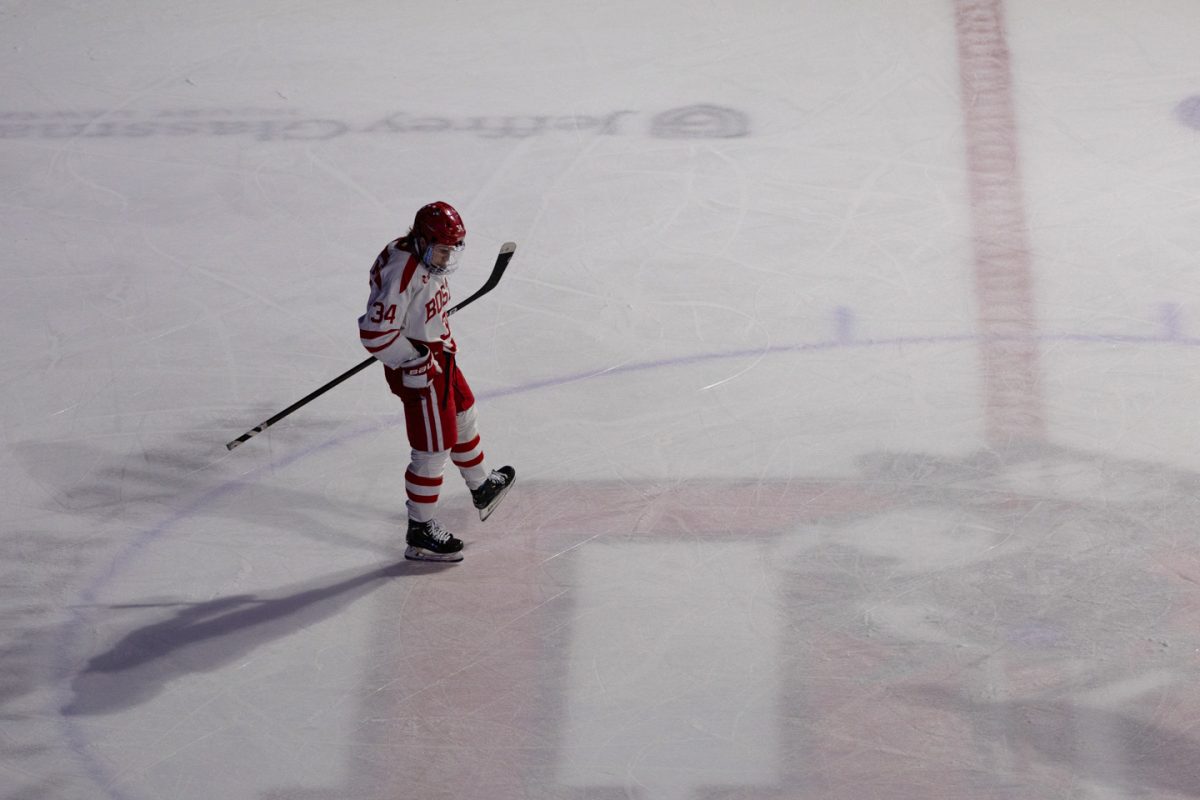
THERE IS A NARRATIVE about Eiserman, about all players like him, for that matter. They’re selfish. They care more about scoring goals than winning. They don’t pass.
Eiserman’s coaches bristle at the idea. After all, scoring is undoubtedly the best, most direct way to help a hockey team win. One former coach actually found himself asking Eiserman to shoot more.
“If I can score, it helps the other guys who play different positions,” Eiserman says. “The defensive defenseman, their job is to keep the puck out of the net. So if I can put the puck in the net, their job feels better. [The goalies], their job feels easier. So it just helps everyone out.”
Quarterbacks in football often say they fell in love with the position because they wanted as much influence on wins and losses as possible. I ask Eiserman if he became a goal scorer for a similar reason. “Growing up, I always thought I had to take control of the game,” he says. “I just fell in love with that kind of style, doing it for teammates, doing it to win games.” In a sense, wanting more control is selfish; in another sense, it’s selfless — BU can’t win if it doesn’t score, and Eiserman has made it his job to do so.
I pull up a clip from last season’s Hockey East quarterfinal. BU is hosting UMass, and the game is in overtime, tied 2-2. Both teams will eventually earn at-large bids to the NCAA tournament, but this is still a postseason game, and it’s hanging in the balance. The play starts in BU’s defensive zone, after goalie Mikhail Yegorov saves a shot from a Minutemen forward. BU defenseman Sascha Boumedienne clears the puck off the corner of the boards, and it bounces perfectly into the stride of Eiserman, who is headed the other way (BU is attacking right to left on screen). Eiserman retrieves it with acres of space down the left wing and only one defender between him and the UMass goal. But teammate Jack Hughes is hauling ass down the center of the ice. A two-on-one is emerging.
I ask Eiserman if he considers passing. No chance.
“Tunnel vision. I’m trying to win the game,” he says. “My coaches wouldn’t like me passing here either.”
The lone UMass defender, Lucas Olvestad, is skating backwards, initially down the middle of the ice, to defend both Eiserman and a potential pass to Hughes, but eventually he sells out to stop Eiserman and extends his stick to disrupt or steal the puck. By this point, Eiserman is at the top of the left circle. He can feel Olvestad’s stick coming and begins his shot. Michael Hrabal, a second-round draft pick, is in net. And Eiserman knows something Hrabal might not.
“I had a shot in the first period of this game. I tried to go upstairs on him from the same spot,” he explains. “I saw that he kind of lunged up a little bit. So no matter what my next shot was, I was going five hole.”
Eiserman now takes control of the video. He fast-forwards to the moment he releases the shot and points at Hrabal on screen. “If you watch him here, he’s late to drop,” Eiserman says. He ponders if it’s because Hrabal thinks he’s shooting high again or because he threw him off by kicking up his back leg during the shot. “That movement usually shows that you’re [shooting] up,” Eiserman says.
By the time Hrabal drops his legs, the game is over.
“You think you know where he’s going,” Kempf says. “And you’re not even close.”
Eiserman speeds up after he scores. He wheels around the goal, stick pointed to the rafters, then unbuckles the chinstrap of his helmet and raises both arms at the Agganis Arena stands. The man who, just a couple hours earlier, sat on the bench and eliminated all possible distractions is now almost begging the fans to acknowledge him. These outpours of emotion are not uncommon.
“I just love it so much,” Eiserman says. “All of the work that goes into scoring that one goal. It’s so nice when it all comes together. It’s who I am — I love the game of hockey and I love scoring. It’s what makes me happy.”
Editor’s note: This story is part of the Daily Free Press’ annual Hockey Issue. Physical copies are available around campus starting Friday, October 3rd and will be handed out at both the men’s and women’s home openers.
